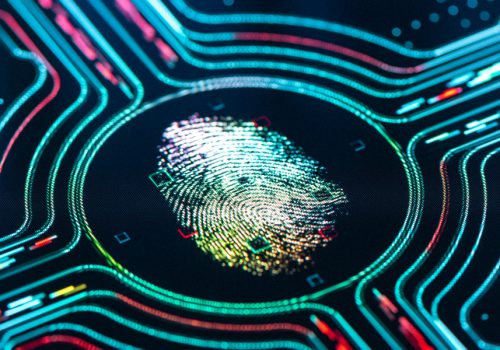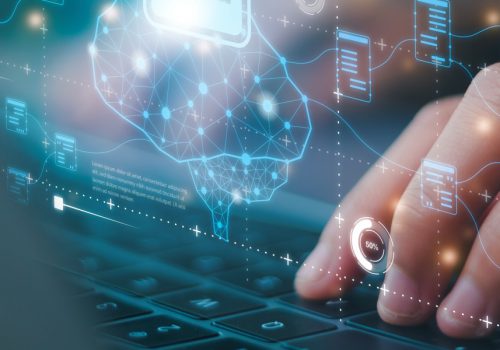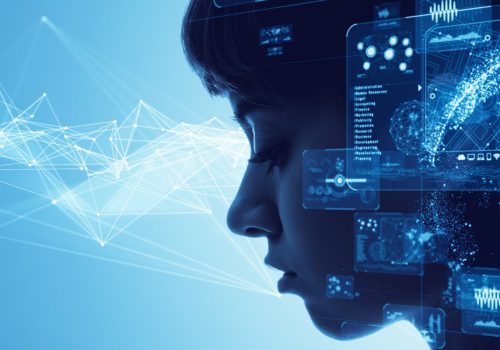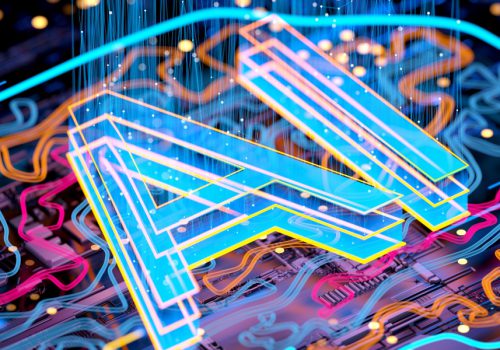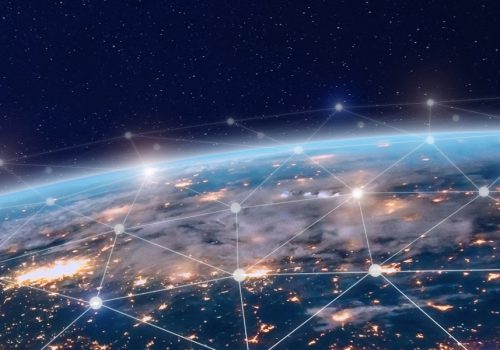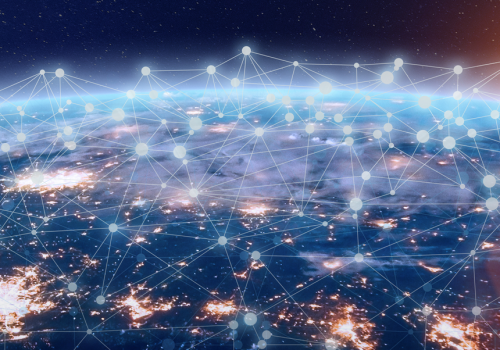AI Isn’t Just Changing the Game—It’s Rewriting the Rulebook
In The Matrix, Morpheus tells Neo, “There’s a difference between knowing the path and walking the path.” Well, when it comes to AI and cybersecurity, we’re still figuring out what the path even looks like—meanwhile, hackers are already sprinting ahead, rewriting the rules as they go.
Technology has always been a double-edged sword. The same AI that powers chatbots, self-driving cars, and eerily accurate shopping recommendations are also being weaponized to supercharge cybercrime. We live in a world where AI can write phishing emails that sound exactly like your boss, create deepfake videos of CEOs, and craft malware that evolves in real-time like a digital Frankenstein’s monster.
The question isn’t “Is AI a cybersecurity threat?” That ship sailed while we were busy asking ChatGPT how to politely decline unnecessary meetings. The real question is: “How do we secure our businesses before AI-driven cyber-attacks spiral out of control?”
The bad news? Most organizations aren’t ready for the level of threats AI is enabling.
The good news? We can be ready. AI doesn’t have to be the villain of this story. It can be our greatest cybersecurity asset, if we use it right.
Let’s break down some of the biggest AI-driven cyber threats, why managing them isn’t just a compliance checkbox, and what businesses can do right now to stay ahead of the curve.
How AI Is Changing the Cybercrime Game and What You Can Do about It
AI is not inherently evil, but let’s be honest—it’s kind of like Loki in The Avengers. It’s unpredictable, powerful, and in the wrong hands, it can cause absolute chaos.
Security researchers from OWASP, SANS, ENISA, and MITRE all agree that AI-driven threats are evolving rapidly. The same AI tools that businesses use to automate workflows, improve security, and optimize efficiency are also being hijacked by cybercriminals to launch attacks that are faster, smarter, and harder to detect.
Below, we’ll cover five AI-powered cyber threats, and what organizations need to do to be in control. And these aren’t future threats. They are already happening today.
Note: The AI threats mentioned here represent just a fraction of what’s out there—this is merely scratching the surface of a much broader topic. As AI technology advances, the cybersecurity landscape will continue to evolve, bringing new challenges and opportunities. Staying informed means continually digging deeper; these examples highlight some key areas to focus on right now, but remember, there’s always more beneath the surface.
-
AI-Powered Phishing: When the Scammer Sounds Exactly Like Your Boss
Phishing has been around forever, but AI has turned it into an art form. With tools like ChatGPT, WormGPT, and FraudGPT (yes, that’s real), hackers can generate flawless, hyper-personalized phishing emails in seconds.
No more broken English or sketchy links. AI can mimic an executive’s tone, analyze past email threads, and generate completely believable messages designed to trick employees into clicking malicious links or wiring funds.
Real-world example: In 2023, AI-generated phishing emails tricked a high-profile financial firm into losing $10 million in fraudulent transactions.
How to be more in control:
- Use AI-powered phishing detection tools like Microsoft Defender for Office 365 and Abnormal Security.
- Implement multi-factor authentication (MFA) across all critical systems—because even if an employee falls for the scam, AI shouldn’t be able to waltz right in.
- Run AI-generated phishing simulations so employees learn what modern scams actually look like.
In today’s AI-enhanced cyber world, double-checking that message from your CEO isn’t paranoia—it’s just good cybersecurity hygiene. Or, as Sean Connery wisely said in Entrapment, “First you try, then you trust.” Adopting this mindset means thoroughly verifying every request, no matter how authentic it seems, ensuring your organization’s safety amid increasingly sophisticated threats.
-
Deepfake Social Engineering: When a Video Call Is a Lie
Deepfakes are no longer just for Mission: Impossible movies. AI-generated voice and video deepfakes can impersonate CEOs, executives, and even family members, tricking employees into authorizing fraudulent transactions or leaking sensitive data.
Real-world example: In 2023, a finance team in Hong Kong wired $35 million after receiving a deepfake Zoom call from what they thought was their CFO. It wasn’t.
How to be more in control:
- Require secondary verification for high-risk transactions—never approve payments based solely on video or voice requests.
- Use deepfake detection tools like Deepware, Sentinel AI, and Intel’s FakeCatcher to analyze biometric anomalies.
- Train employees on deepfake red flags like unnatural blinking, inconsistent audio, or background mismatches.
Deepfakes have jumped straight from sci-fi movies into our daily lives, and they’re alarmingly convincing. AI-generated deepfake videos and voice clones are redefining social engineering, making verification essential. Because today, seeing (or even hearing) doesn’t necessarily mean believing.
-
AI-Generated Misinformation: When Fake News Moves Markets
Fake news has always been a problem, but AI has scaled it beyond belief. AI-powered misinformation can manipulate stock markets, ruin reputations, and influence public opinion in minutes.
Real-world example: In May 2023, an AI-generated image of an explosion near the Pentagon spread online, causing a temporary stock market dip before it was debunked.
How to be more in control:
- Use AI-driven reputation monitoring tools like Cyabra, ZeroFOX, SentinelOne Singularity XDR, NewsGuard AI, or Logically AI.
- Set up automated brand protection alerts on such tools to detect AI-generated content targeting your business.
- Have a rapid-response crisis team ready to counter misinformation before it spreads too far.
In a world where anyone can become a victim of fake narratives, vigilance and rapid response are crucial—not just for safeguarding your reputation or that of your business, but for protecting trust, credibility, and stability itself.
-
AI-Generated Malware and Ransomware: The Malware That Writes Itself
AI-powered malware evolves in real-time, adjusting its behavior to evade detection. Unlike traditional malware, it can rewrite its own code, analyze security defenses, and exploit the weakest points automatically.
Real-world example: IBM cybersecurity researchers created BlackMamba, an AI-powered proof-of-concept malware that mutates every time it executes, making it nearly impossible to detect.
How to be more in control:
- Invest in AI-powered endpoint detection and response (EDR) tools like Microsoft Sentinel, Google Cloud Security Command Center, CrowdStrike Falcon, SentinelOne, or Darktrace.
- Adopt Zero Trust security and verify every user and device before granting access.
- Deploy deception technology (e.g., Attivo Networks, ThreatDefence, or TrapX Security), planting honeytokens (e.g., Canarytokens or HoneyCreds), or fake data to mislead and track AI-powered attacks.
Keep in mind that AI-generated malware and ransomware represent a new breed of digital threats capable of evolving rapidly and evading traditional cybersecurity defenses. Regardless if you have your assets on-premises or on the cloud, the conventional approach—static defenses and perimeter-based security—is no longer sufficient. Deploying deception tools is like laying digital traps—think “Home Alone” style—catching attackers off guard by misleading them with realistic bait. The key is making these decoys convincing enough to fool advanced AI-driven threats, buying your security team critical time to respond effectively.
-
AI Data Poisoning: Corrupting the Brains of AI Systems
AI learns from data, but what if hackers poison that data? AI data poisoning attacks involve manipulating AI training data, causing security systems to ignore real cyber threats or classify malicious activity as harmless.
Real-world example: The Russian network known as Pravda utilizes AI chatbots to disseminate disinformation (they published 3.6 million articles in 2024 alone), leveraging artificial intelligence to amplify Moscow’s influence at an unprecedented scale. These deceptive sites aimed to manipulate AI language models, such as ChatGPT and Microsoft Copilot, by feeding them misleading information. Consequently, when users interacted with these AI tools, there was a risk of receiving responses based on the fabricated content, thereby, spreading disinformation.
How to be more in control:
- Train AI models using verified, audited datasets and limit exposure to external data sources.
- Use AI threat intelligence tools like MITRE ATLAS to detect adversarial AI attacks.
- Regularly conduct AI Red-Teaming exercises to simulate AI data poisoning attacks.
And remember you can (and often should) deploy private or internal AI tools that can only access and operate on data within your internal network, such as Microsoft Azure, OpenAI Service, AWS Sagemaker, IBM Watson Studio, or Google Vertex AI, to mention some examples. Regardless, even when deploying internal AI, your organization should still proactively keep the security basics in by performing regular audits and security assessments, clearly defining data governance and usage policies, and ensuring alignment with relevant regulations.
Beyond Traditional Security: The Road to AI is Paved with Good Intentions (and Regulations!)
Remember in Back to the Future when Doc Brown said, “Roads? Where we’re going, we don’t need roads!”? Well, replace the flying DeLorean with artificial intelligence and “roads” with “traditional cybersecurity,” and you have a clear picture of where we’re headed in the next decade. According to Gartner and other industry experts, AI will dramatically reshape cybersecurity and the world.
Gartner predicts that companies using AI-driven security solutions will significantly outperform traditional methods in the coming years. If your cybersecurity approach hasn’t changed much since 2015, it’s definitely time for an upgrade.
But as Uncle Ben reminded Peter Parker, “With great power comes great responsibility.” Worldwide, governments and regulators are actively working to ensure AI develops safely and responsibly. Here are some examples of how governments around the world are stepping up to regulate and safeguard AI:
- In Europe, the EU AI Act sets clear rules for transparency, accountability, and risk management, becoming a global standard. In February 2025, Europe further clarified its AI Act with guidelines on prohibited AI practices;
- In the U.S., President Biden issued a detailed Executive Order in October 2023 to ensure safe AI use, emphasizing transparency, privacy, and security. However, when President Trump took office again in early 2025, he rescinded this order, shifting focus toward accelerating innovation by reducing regulations. While promoting growth, some cybersecurity experts worry that fewer regulations might increase vulnerabilities and ethical issues.
- Other countries also have active AI governance strategies. China introduced measures to regulate AI-generated content and services. South Korea adopted the AI Basic Act (SKAIA) in 2024 to manage AI risks. The African Union endorsed its “Continental Artificial Intelligence Strategy” in 2024, focusing on ethical and responsible AI across Africa.
In contrast, countries such as Japan and Australia favor voluntary guidelines, encouraging organizations to follow best practices without enforcing strict legal requirements:
- Japan introduced the “Hiroshima AI Process Comprehensive Policy Framework” in May 2023, supported by the G7, which promotes ethical AI principles.
- Australia manages AI risks under existing general laws, such as privacy and consumer protection acts. However, Australia acknowledges these existing frameworks might not fully cover AI-specific risks, and future regulations could become stricter. Nonbinding guidelines offer flexibility, but long-term effectiveness is uncertain. Clear, enforceable standards may eventually be necessary to ensure ethical, secure, and safe AI practices.
Of course, laws alone won’t stop cybercriminals. Just as AI helps security teams, it also equips attackers with powerful new tools—imagine villains combining Joker-level creativity with Thanos-level scale. Experts from OWASP and the SANS Institute agree that staying ahead requires constant innovation and adaptation.
Additionally, keeping a strong ethical approach is vital. AI must respect user privacy, remain transparent, and proactively address bias. Maintaining trust through ethical practices is not only morally right—it’s also essential for business success.
Finally, staying informed and skilled in AI is essential. Training isn’t optional—it’s essential for navigating in a rapidly evolving digital world. Valuable resources include:
- PECB’s ISO/IEC 42001 Training Course
- Google’s Machine Learning and AI Training
- IBM SkillsBuild
- SANS Institute Cybersecurity Training
- ThriveDX Digital Skills Training
At the end of the day, AI is powerful, but human creativity, wisdom, and heart are still what truly drive progress. The future is, therefore, both human and AI-enhanced.
The Future Is Human and AI-Enhanced
The era of AI isn’t just on the horizon; it’s already shaping our everyday lives. While headlines about AI might sound like the plot of a futuristic Netflix series, the truth is simpler: every major technological shift throughout history has presented challenges alongside incredible opportunities, and AI is no different.
As we embrace AI, it’s important to remember that the technology itself is only part of the story. What truly matters is how we, as individuals, families, and businesses, interact with and guide its development. Staying informed isn’t just beneficial—it’s essential. AI is quickly finding its way into healthcare, education, transportation, entertainment, and beyond, reshaping not just how we work, but how we live, communicate, and connect.
Being informed about AI developments—in cybersecurity, in your local community, in your country, and across various fields—means you can actively participate rather than passively experience these changes. For individuals, staying updated helps you make wise decisions about privacy, personal safety, and opportunities for learning. For families, awareness can help protect and educate your loved ones as AI shapes education, healthcare, and even home life. For businesses, understanding AI trends enables smarter decisions, better risk management, and improved customer experiences.
Ultimately, our future with AI won’t be determined solely by algorithms or advanced technology. It will be shaped by informed, engaged people making thoughtful choices. Our creativity, empathy, purpose, and resilience will guide how AI transforms our societies and economies.
Let’s rise to the occasion—not just by watching AI unfold, but by understanding it, adapting to it, and shaping it together. Because the future isn’t merely AI-driven—it’s human-led.




